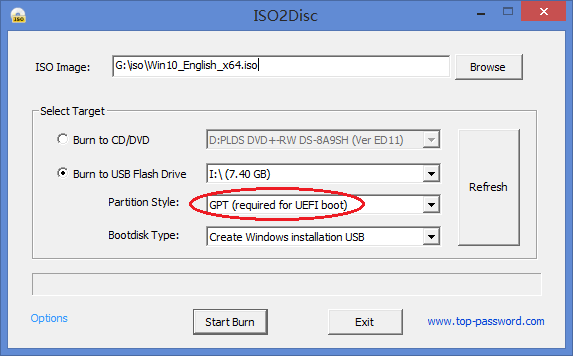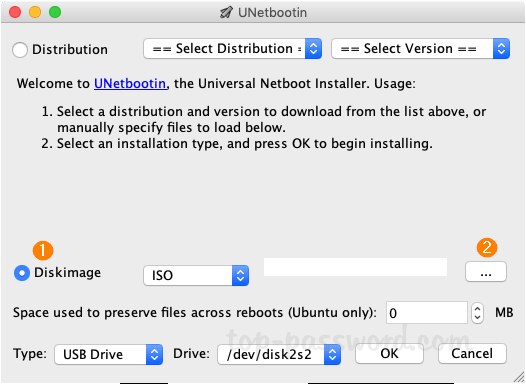

- HOW TO USE A BOOTABLE USB WIN10 HOW TO
- HOW TO USE A BOOTABLE USB WIN10 INSTALL
- HOW TO USE A BOOTABLE USB WIN10 WINDOWS 10
- HOW TO USE A BOOTABLE USB WIN10 PC
- HOW TO USE A BOOTABLE USB WIN10 ISO
This is especially useful if the original USB you created wasn’t correctly created and became corrupted. The other option is to create a new bootable USB. This will quickly tell you if the problem is with the USB or your computer. It’s best to use the original Windows setup USB, or your computer restores USB. For example, if the computer doesn’t support USB booting, no hardware tweak could force the OS to install.
HOW TO USE A BOOTABLE USB WIN10 WINDOWS 10
Sometimes, the only solution is to use a different Windows 10 installation method like direct download or use a CD to install. Below, you’ll find the quickest and most efficient solutions.
HOW TO USE A BOOTABLE USB WIN10 INSTALL
If you’re trying to install Windows 10 from a USB drive, you’re in luck We’re about to cover how you can fix USB-related download issues.
HOW TO USE A BOOTABLE USB WIN10 HOW TO
How to fix Windows 10 not installing from a USB The problem might have something to do with the drivers. If this doesn’t work, check your USB device drivers. Some devices turn unused USB controllers off to save energy, and you’ll need to turn them on manually. If the USB isn’t faulty, it might be because the USB port has no power. This is because your computer won’t detect the device.
HOW TO USE A BOOTABLE USB WIN10 PC
If your PC USB port isn’t working, you obviously can’t install Windows 10 from the USB stick. Otherwise, the installation won’t be successful. The PC you’re trying to install the OS on needs a processor above 1 GHz (a RAM of 1GB for the 32-bit version and 2GB for the 64-bit version). Incompatible hardwareĪlthough Windows 10 runs in almost all hardware, including Atom-based tablets, it has minimum installation requirements to install successfully. In other words, you need to recreate the bootable USB from scratch. Unfortunately, it isn’t possible to modify an already corrupted bootable USB. This corruption will lead to a failed Windows 10 installation. This can happen if you use an unreliable Microsoft Media Creation to create your bootable USB, causing damage or corrupting the stick.
HOW TO USE A BOOTABLE USB WIN10 ISO
The problem might be due to issues occurring when creating the ISO image on your bootable USB. So, in addition to the 16GB, you might need an extra 10GB to transfer and support the file successfully. The 64-bit version will need at least 20GB of space. You need at least 16GB of free space to install the 32-bit version of the OS – the version is popular for tablets and the cheaper laptop models. If your PC hard or solid-state drive doesn’t have enough free space, you can’t install Windows 10 from a USB stick. Windows 10 requires quite a bit of memory space to install. Therefore, before you start the installation process, ensure that the settings have the correct configuration to not interfere with the process. If not correctly configured, the settings on the UEFI/EFI can interfere with the booting and installation from a USB or CD.

The settings on an EFI/UEFI PC aren’t configured properly For example, if your computer supports UEFI, you need to ensure that the USB is formatted in the FAT32 file system to install the UEFI mode.Ī USB with an NTFS file system can’t boot and install Windows 10 in a UEFI mode computer. The USB stick format is not supportedĪnother reason could be that the computer doesn’t support the format system of your USB. Then, in the Windows startup screen that appears, enter BIOS.įrom here, you can check whether your computer supports booting from USB. To do this, restart your computer, and depending on your computer make, press the keys F2, F10, F12, or Delete (you’ll see which special key you need to press at the bottom of the screen). Most modern computers support this method, but it’s best to check and confirm. If your computer falls into this category, the USB installation is off the table. Some computers don’t support Windows 10 booting and installation from a USB. The computer doesn’t support booting from a USB Check any adapters to ensure they’re the correct type, i.e., USB to USB C adapters. Using an incorrect USB drive will make it nearly impossible to boot Windows (or any other program). For example, there are USB-C, traditional USB, USB 2.0, and many other models. So, above all else, ensure that the USB works correctly.Ĭompatibility issues often derive from faulty or incorrect USB models. You can’t successfully install Windows 10 if the USB stick isn’t bootable.

On the other hand, that might be because the USB drive is corrupted or not appropriately created. The reason you can’t install Windows 10 from the USB stick might be because the USB stick itself isn’t working. However, if the installation fails, it can be due to one of the following reasons: An error with the Windows 10 bootable USB With this USB stick, you can successfully install Windows OS onto your PC.


 0 kommentar(er)
0 kommentar(er)
